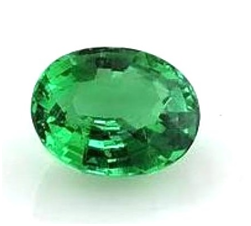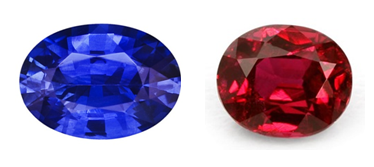GEMSTONE EDUCATION
Colour
The colour of a gemstone is the most important quality and defining characteristic.
When talking about the colour of a gemstone we reference their Hue, Tone and Saturation.
- Hue – the dominate colour of the gemstone such as red, green or blue.
- Tone – how light or dark the gemstone appears
- Saturation – the strength or intensity of the hue
For most gemstones the most desirable and valued stones are those with an intense heavily saturated colour with a medium tone. Colour is the number one factor in determining the value of a gemstone, closely followed by transparency.
Clarity
Inclusions are completely natural and present in all gemstones, this is what gives them their own uniqueness. There are some gemstones which have a low number of inclusions such as Aquamarine, whereas some have a high number of inclusions such as an Emerald.
Clarity is an important factor to consider with gemstones. A gemstone with a high number of inclusions will affect the transparency of the stone which in turn affects the beauty and value.
Cut
A good cut is marked by its ability to reflect light evenly and showcase the colour of the gemstone as well as having good proportional and symmetrical appearance.
Size
The Carat weight of a gemstone often doesn’t accurately reflect the size of the stone like it does with a diamond. The reason for this is that all gemstones have different densities which means two gemstones which are the same size in appearance may actually be different Carat weights. For this reason, gemstones are often described by their dimensions (E.g. 5mm x 3mm)
Emerald
Emerald has a rating of 7.5 – 8 on the Mohs scale (the Mohs scale specifically rates the ability of a gemstone to withstand scratching and abrasions on a scale from 1 to 10). While Emerald has a high rating on the scale the toughness and durability are only considered fair so this is not a gemstone we would recommend for everyday wearing.
Emeralds are naturally heavily included and will often have surface breaking fissures. Inclusions in Emerald are widely accepted and add to the individuality of each gemstone.
As most Emeralds are heavily included and have surface breaking fissures around 98% of all Emeralds worldwide are ‘oil’ treated to try to enhance to clarity. This treatment is accepted as common practice within the industry.
There are a number of other treatments which are not accepted within the industry. This includes resins, glass and plastic polymers that are melted into the gemstone. We do not sell any Emerald gemstones which have been subject to any of these treatments.
Emeralds can vary in colour from light green to very dark green. The colour is considered the most important factor when pricing an Emerald with the most valuable and desirable being bluish green to green.
It is important that Emeralds are carefully handled because of their brittleness. Cleaning techniques which use chemicals, steam or high heat should never be used.

Ruby and Sapphire
Ruby and Sapphire gemstones have a Mohs rating of 9 which means they’re one of the hardest gemstones, making them ideal for everyday use (the Mohs scale specifically rates the ability of a gemstone to withstand scratching and abrasions on a scale from 1 to 10). These gemstones are part of the Corundum family.
Ruby gemstones exist in different shades of red, from pale pink to near burgundy. The colour of a Ruby is by far the most important factor to consider when making an evaluation. For instance, a vivid, medium-dark red commands a much higher price than a pale pink Ruby.
The most commonly found Sapphire gemstones are pink and blue but they do exist in a number of shades including orange, yellow and brown.
Ruby and Sapphire gemstones are formed deep in the earth’s crust and are found all over the world including countries such as Thailand, India, Sri Lanka, Burma, Australia and more.
Ruby and Sapphire gemstones will always have visible inclusions. This is completely natural and gives the gemstones its own uniqueness.
Heat treatment on Ruby and Sapphire gemstones is used widely accepted and used within the industry with over 95% of all Ruby and Sapphires being heat treated. This is done to increase the beauty and desirability of the gemstone. Heat treatment is the only treatment accepted within the industry, other treatments such as fracture filling, surface dyes, infusion, irradiation and beryllium are not accepted. We do not sell and Ruby or Sapphire gemstones which have been subject to any treatment other than heat treatment.







